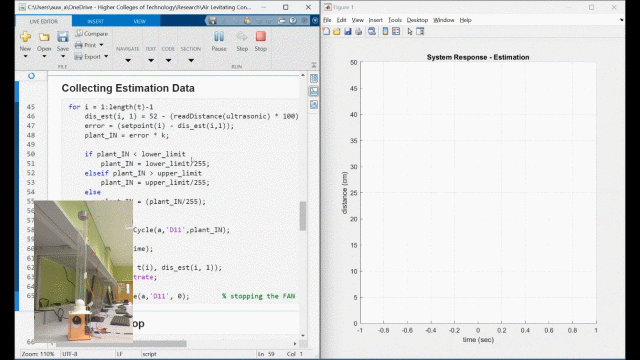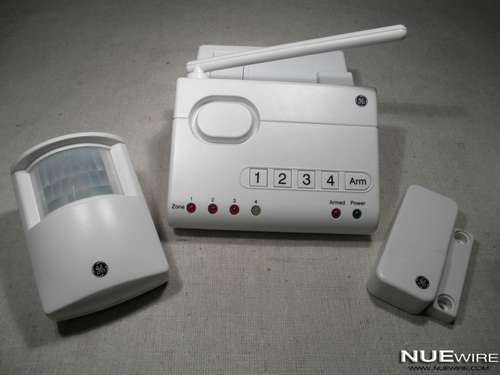Air Levitating Ball: Innovating Education with Technology
In-class Activities with Hands-on Experience for Control Systems
Today, we’re honored to host Atta Ulwasay, a lab engineer at the Mechatronics Engineering department at the Higher Colleges of Technology based in the UAE, who will share insights into an innovative project: the Air Levitating Ball Control Setup with MATLAB and Arduino UNO. This project exemplifies how classroom activities can be transformed through the power of low-cost setups and cutting-edge technology.
“In our Control Systems course, we have been extensively utilizing MATLAB and Simulink, primarily for simulation purposes. This includes leveraging MATLAB Live Scripts and Simulink models, complete with interactive controls and dashboard elements” ~ Eng. Atta Ulwasay
In the spring of 2022, a project was announced for sophomore design students and completed using script-based programming in the Arduino IDE using MATLAB Hardware Support Package for Arduino. This Air Levitating Ball project was later adopted for our third-year Control Systems course, incorporating MATLAB to enrich the in-class activities and hands-on learning experiences.


Sophomore Design Project of Air Levitation Ball – from CAD to real life


Potentiometer for adjusting set-point and HC-SR04 ultrasonic sensor for height measurement
Several issues had to be resolved to make the project suitable for in-class demonstrations. The tube diameter was smaller than the ultrasonic sensor, leading to potential misalignment and false readings. We found a solution by utilizing a 5 cm tube from the chemistry lab equipment. Additionally, we designed and 3D printed supports for the blower fan and a holder for the ultrasonic sensor to ensure proper alignment and functionality.

What is the Air Levitating Ball Control Setup?
The Air Levitating Ball Control Setup is an ingenious project that combines the simplicity of Arduino UNO with the computational power of MATLAB Live Script to create a system that can precisely control the levitation of a ball in the air. This project not only demonstrates the students’ engineering prowess but also their commitment to pushing the boundaries of educational technology.

How was the project developed?
The development process of this unique setup involved several critical steps, each contributing to the system’s overall success:
- Hardware Setup: The team utilized an Arduino Motor Shield paired with a two-pin Blower Fan to achieve precise control over the ball’s levitation. This choice of hardware ensured a balance between cost-effectiveness and functionality.
- Initialization: Key variables such as step input, controller gain, simulation duration, sampling time, and saturation limit were meticulously set up to optimize the system’s performance.
- Data Collection: The project moved into the data collection phase, where the team gathered information on the closed-loop system’s behavior with varying controller gains, crucial for fine-tuning the system’s response.
- Plotting: By visualizing the system response, the team could analyze and understand the system’s dynamics better, allowing for more informed adjustments.
- Workspace Saving: Essential data was saved within the MATLAB workspace, ensuring that valuable information was readily available for future reference and analysis.

Data Acquisition with gain controller having step response

Collecting validation data

Interactive Simulink model demonstrating effects of PID parameters
The Role of MATLAB Live Script
MATLAB Live Script was a game-changer for this project, making the setup not only more presentable but also significantly more efficient. Its ability to allow for seamless iterations and adjustments with minimal time investment proved invaluable. The Live Script’s segmented structure facilitated an efficient workflow, akin to turning a system ON and OFF as needed.
Automating Data Collection
One of the project’s highlights was enhancing the Live Script to automate data collection. This feature enabled the team to run the system with different gains and compare the results effortlessly, showcasing the project’s innovative approach to problem-solving. Additionally, the System Identification app was used to model and refine the system dynamics, further enhancing the accuracy and performance of the control setup.
Looking Ahead
The team is not resting on its laurels; the next steps involve incorporating System Identification Tasks to refine the system further and enhance its performance. This ongoing commitment to improvement reflects the project’s overarching goal: to revolutionize educational technology and provide students with hands-on, engaging learning experiences. Students were also encouraged to attend the Control Systems Onramp, an online self-paced course that covers basics of feedback control design in Simulink®.
Conclusion
The Air Levitating Ball Control Setup project represents a significant leap forward in educational technology, made possible by the dedicated students and faculty at the Higher Colleges of Technology, UAE. Through their innovative use of MATLAB and Arduino UNO, they have set a new standard for interactive and cost-effective classroom projects. We applaud their achievements and eagerly anticipate the future advancements they will bring to the field of engineering education.
- 类别:
- MATLAB









评论
要发表评论,请点击 此处 登录到您的 MathWorks 帐户或创建一个新帐户。